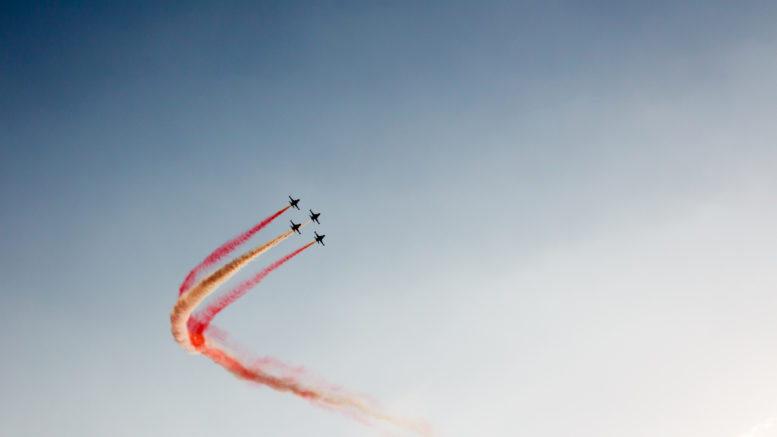Stunt plane flying is a thrilling and daring pursuit that captivates audiences around the world. The jaw-dropping aerobatic maneuvers and precision flying displayed by stunt pilots require exceptional skill, training, and a deep understanding of aviation principles. In this blog post, we will delve into the world of stunt plane pilots and explore how they are trained to perform these incredible aerial feats. From basic flight training to specialized aerobatic instruction, join us as we uncover the rigorous training process that prepares stunt plane pilots for the exhilarating world of aerobatics.
The Foundation: Basic Flight Training
Mastering the Fundamentals: The journey to becoming a stunt plane pilot begins with mastering the basics of flight. Aspiring pilots undergo rigorous training that includes ground school instruction, simulator practice, and hands-on flying experience. They learn about the principles of aerodynamics, aircraft systems, navigation, and flight regulations. Through extensive flight hours, they develop essential piloting skills, including takeoff and landing techniques, radio communication, aircraft control, and emergency procedures.
Transitioning to Solo Flight: After gaining proficiency in the fundamentals, aspiring pilots progress to solo flight. Under the guidance of experienced flight instructors, they build confidence and hone their skills by flying without the presence of an instructor. Solo flight provides an opportunity for pilots to develop a deeper understanding of aircraft behavior and refine their decision-making abilities in various flight conditions.
Advanced Flight Training
Aerobatic Flight Introduction: As pilots gain proficiency in basic flight maneuvers, they may choose to pursue specialized training in aerobatics. Aerobatic flight training introduces pilots to the world of high-performance aircraft and teaches them the intricate techniques required to perform aerobatic maneuvers safely. Pilots learn about the unique characteristics of aerobatic aircraft, such as their increased maneuverability, structural strength, and specialized systems.
Safety and Emergency Procedures: Safety is of utmost importance in stunt flying. Pilots undergo training in emergency procedures, such as recovery from unusual attitudes, spins, and stalls. They learn how to recognize and respond to potential emergencies, ensuring their ability to maintain control and mitigate risks during high-performance maneuvers.
Aerobatic Maneuvers and Techniques
Aerobatic Maneuver Fundamentals: The heart of stunt flying lies in the execution of aerobatic maneuvers. Pilots receive extensive instruction on a variety of aerobatic maneuvers, including loops, rolls, spins, hammerheads, and stalls. They learn the fundamental techniques and principles behind each maneuver, understanding the critical inputs required to achieve precision and safety. Pilots practice these maneuvers repeatedly under the guidance of experienced instructors until they can perform them with accuracy and consistency.
Progressive Skill Development: Stunt plane pilots progress through a series of skill levels, starting with basic maneuvers and gradually advancing to more complex and demanding routines. They build upon their foundational skills, refining their technique, timing, and spatial awareness. Each new skill level introduces additional challenges, requiring pilots to master new maneuvers and push the boundaries of their capabilities.
Physical and Mental Conditioning
Physical Fitness: Stunt plane piloting demands physical fitness and endurance. Pilots must maintain a high level of physical conditioning to withstand the physical forces exerted during aerobatic maneuvers. They engage in exercises that improve core strength, flexibility, and cardiovascular fitness. By developing physical resilience, pilots can perform maneuvers comfortably and minimize the risk of fatigue-related errors.
Mental Focus and Concentration: Aerobatic flying requires exceptional mental focus and concentration. Pilots must be able to maintain attention to detail, process information quickly, and make split-second decisions. They undergo mental training exercises to enhance their ability to stay focused, manage stress, and remain calm in high-pressure situations. Mental preparation and resilience are critical to ensuring safe and precise performances.
Specialized Aerobatic Training Programs
Aerobatic Training Schools: Dedicated aerobatic training schools provide specialized instruction for aspiring stunt plane pilots. These programs offer comprehensive training in aerobatics, focusing on the specific skills and techniques required for precision flying. Experienced aerobatic instructors guide pilots through the intricacies of advanced maneuvers, providing personalized coaching and feedback to optimize their performance.
Competitive Aerobatics: Some pilots choose to pursue competitive aerobatics, participating in aerobatic competitions at regional, national, and international levels. Competitions provide a platform for pilots to showcase their skills, compete against fellow aviators, and receive valuable feedback from judges. Competing in aerobatics challenges pilots to refine their technique, push their limits, and continually improve their performance.
Continuous Learning and Professional Development
Safety and Regulations: Stunt plane pilots prioritize safety and stay updated on aviation regulations and best practices. They participate in ongoing training to ensure their knowledge of safety procedures, airspace regulations, and emergency protocols is up to date. Continuous learning helps pilots adapt to evolving aviation standards and ensures their ability to navigate the dynamic and challenging environment of stunt flying.
Advanced Aerobatic Techniques: Even after becoming accomplished stunt plane pilots, aviators continue to refine their skills and expand their aerobatic repertoire. They engage in advanced training programs and seek mentorship from experienced professionals to explore new aerobatic techniques and push the boundaries of their abilities.
Conclusion
Becoming a stunt plane pilot requires dedication, perseverance, and a passion for aviation. From mastering the fundamentals of flight to honing advanced aerobatic maneuvers, stunt plane pilots undergo rigorous training to develop the necessary skills and expertise. With a strong foundation in basic flight training, specialized instruction in aerobatics, and a commitment to continuous learning and safety, these pilots are prepared to thrill audiences with their incredible aerial performances. The world of stunt flying beckons those who are willing to embrace the challenges, push their limits, and soar to new heights in the pursuit of aerobatic excellence.
Ready to Soar with Us?

